Chrisitan Pulisic and AC Milan: A Potentially Perfect Partnership
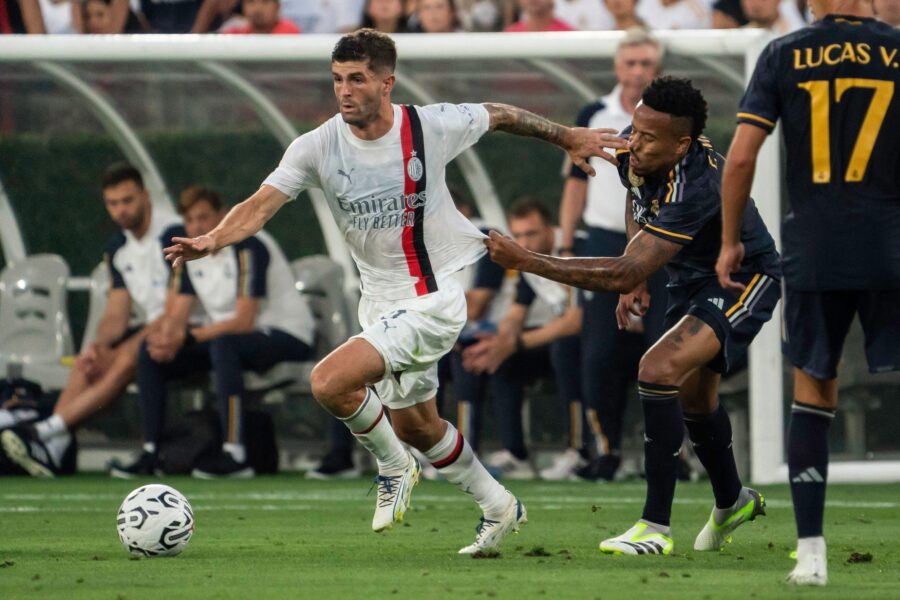
As the 24-year-old American midfielder signed for the Rossoneri, we look at how they can help each other in proving themselves to be among Europe’s best.
Christian Pulisic was signed by AC Milan after going through all the typical ups and downs experienced by almost every young talent. The “chosen one” fame when he was in the US, the move to Europe, and the affirmation in a club that put great emphasis on youth development, such as Borussia Dortmund. And finally, a short decline. The move to Chelsea, with highs and lows, in a difficult league such as the Premier League that often wears down its talents, in a team with a lot of competition such as the Blues.
Pulisic’s experience in London can be summarized into three different moments: the great impact he had under Frank Lampard – becoming the youngest player ever to score a hattrick for the club, scoring one with his left foot, one with his right foot and another one with a header. The seesawing performances under Thomas Tuchel, with rough months followed by extraordinary moments. And then the decline in the last season, when he played less and was engulfed by the off-the-field chaos with so many new signings arriving at Chelsea.
The internet created the ironic “Lockdown Pulisic” nickname to frame the sparkling form that the American had during lockdown when stadiums were empty and he looked unstoppable on Chelsea’s left wing.
Sterling’s arrival during the summer and Mykhailo Mudryk’s in January progressively took playing time away from him. When he played, Pulisic was moved away from his beloved left wing, towards a more central position, sometimes even on the right flank. This can be an interesting aspect when thinking about his move to AC Milan, as the Rossoneri already have Rafael Leao on the left wing and Pulisic’s arrival seems more aimed at replacing Brahim Diaz, who returned to Real Madrid.
What is Pulisic’s Best Quality?
Pulisic is a simple player. A wing or left-forward, who loves to carry the ball and dribble at his direct opponent. He has elite technique and first touch. He is one of those players with such an incredible touch that when he carries the ball he seems to control it as if by magic.
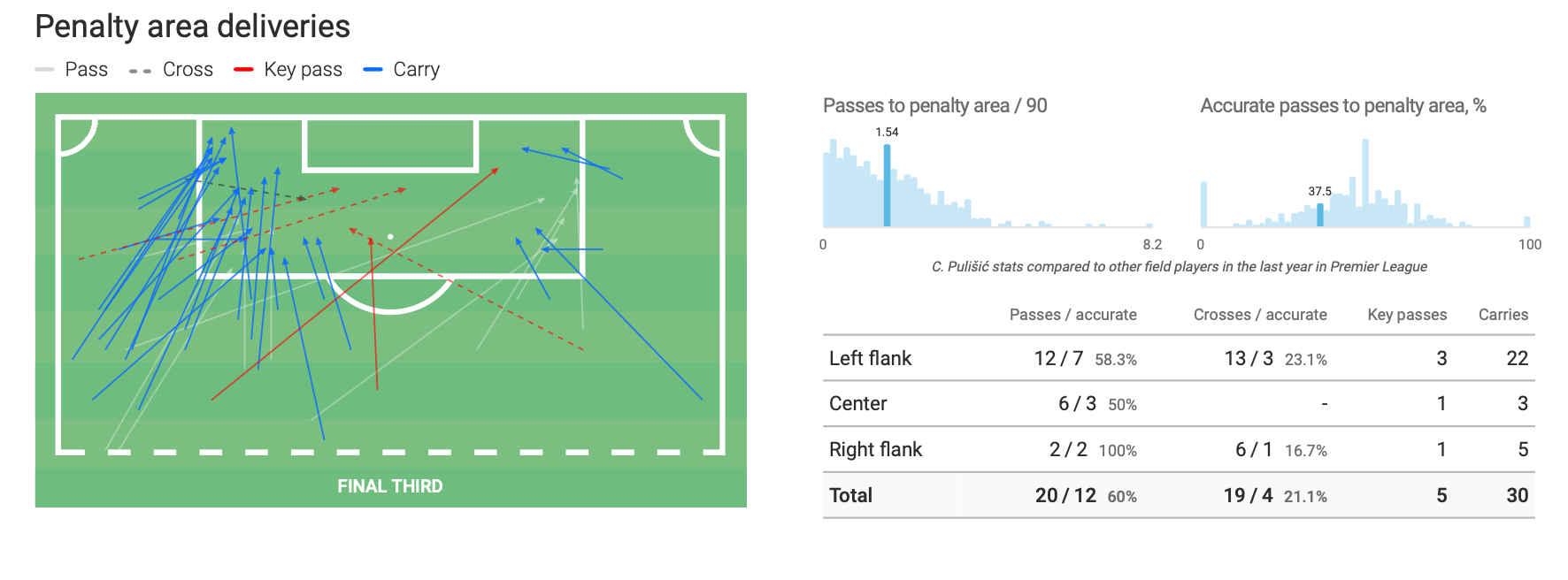
He mostly uses his right foot, but he can also use his left to move the ball and fake. He attempts plenty of dribbles every game, often trying to create chances by himself. In the last few seasons, his successful dribbles are fewer than the attempted ones but that data is also influenced by the fact that he was often subbed in during the game, with the instruction of doing something, which often led him to try to overdo it.
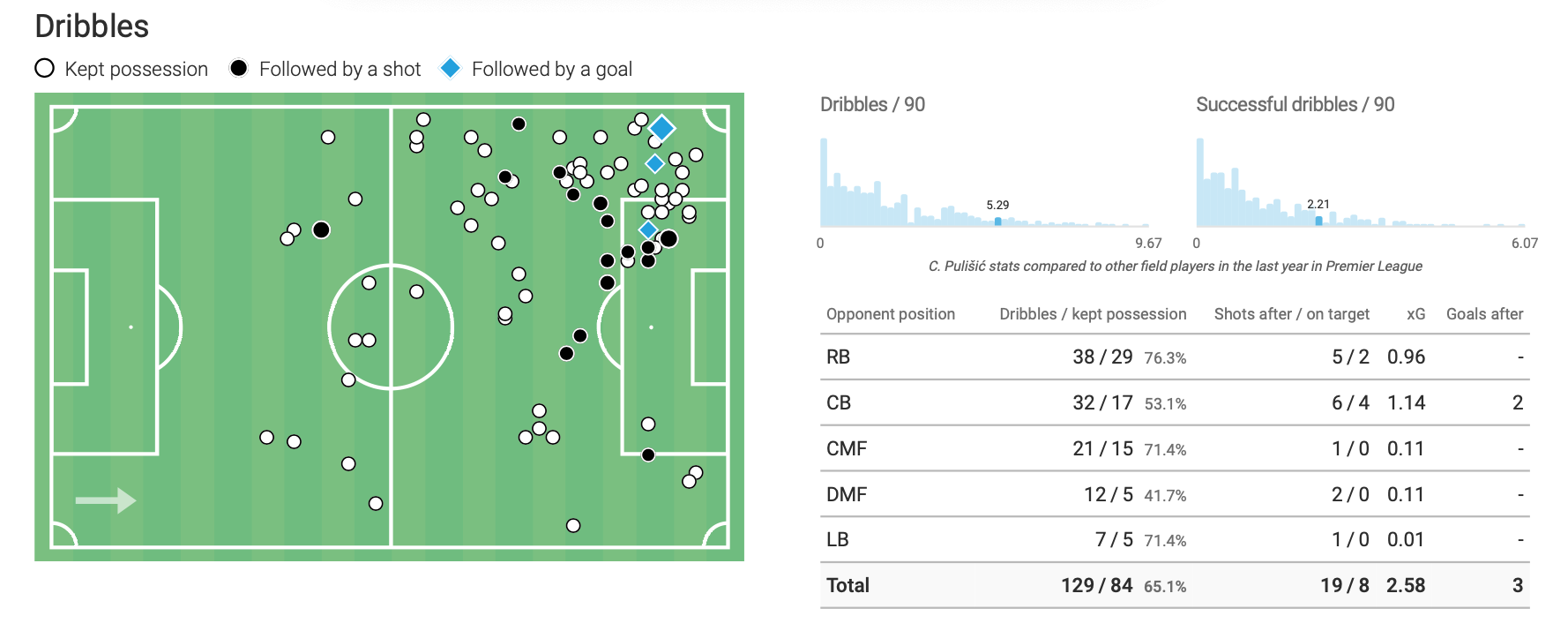
Regardless, Pulisic’s best quality is definitely dribbling and his ability to create numerical superiority. He has a controlled dribbling style, not really based on explosivity but rather on his ability to move the ball quickly, even in narrow spaces. This makes him particularly useful against low defensive blocks. That task was supposed to fall under Brahim Diaz but the Spaniard actually proved to be more efficient in transitions.
Can Pulisic play as a Trequartista?
These skills make Pulisic a very versatile player, even if he gives his best when starting from the left wing and cutting towards the center, linking with teammates in narrow spaces. There’s only one problem: that area of the pitch is taken by Milan’s best offensive player, Rafael Leao. Not only is he the most talented player in terms of creating goal-scoring opportunities but he’s also critical for the Rossoneri possession. His importance for AC Milan cannot be overlooked.
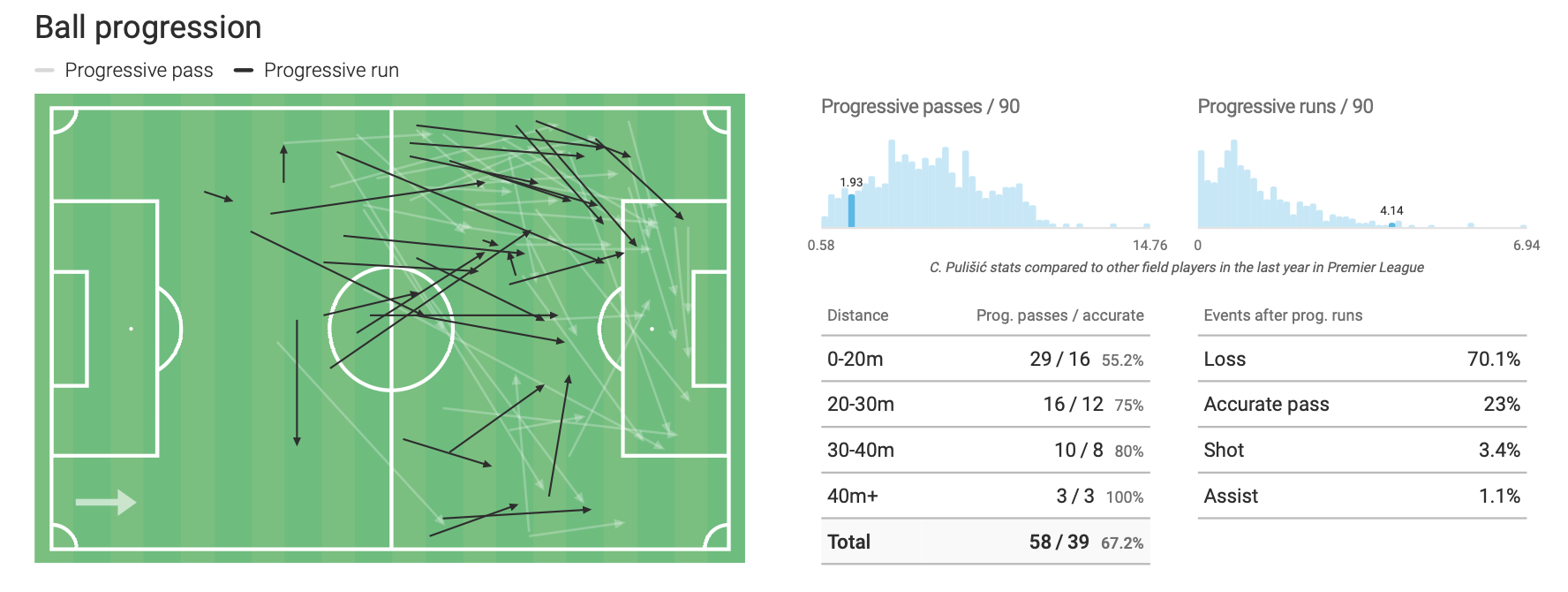
When Leao was injured last season – as happened during the critical Champions League derby against Inter – Milan lost his main source of play. To have a good reserve in that position will be essential but it’s hard to imagine that Pulisic came to Milan to sit on the bench. Milan’s biggest gap is on the right wing, or in the advanced midfielder position. Those two roles could’ve been good for Charles De Ketelaere but at the moment things aren’t going so well for him and his future seems far away from Milan.
In the national team, Pulisic plays less mechanically than he did at Chelsea. Rather than as a winger that has to dribble, he plays as a Trequartista that has to lie deeper to link play with his teammates. He excels at this job thanks to his ball control – which is top-notch – that helps him play with the back to goal. His reactivity in narrow spaces compensates for his lack of physical impact and rather basic use of his body. It is yet to be seen, though, if Pioli will continue using a 4-2-3-1 formation or if the current transfer window will drive him toward a 4-3-3 system. If that was the case, it’s plausible to imagine Pulisic playing on the right wing when Leao is on the pitch.
At the end of the day, that is the position he has played the most during his career, even more than the left winger position. He played there in his last games at Chelsea but also at Borussia Dortmund. By carrying the ball with the right foot, he’s more predictable than when he uses his natural foot and struggles more to link with other teammates in the center of the pitch. On the right wing, he’s still a menace with the ball and for his ability to mess with opposing defenses. Even if, in his best scoring season, at Chelsea in the 2019-20 campaign, he played on the left.
Where Can Pulisic Still Improve?
If we look at Pulisic’s performances, it’s clear that he hasn’t produced much in terms of goals and assists for an offensive player. He never reached double digits and he scored only 9 goals in his best-scoring season with Chelsea. Even in his best years – mainly those at BVB – he only scored 4 goals, while his highest-ever number of assists was 6 during the 2016/17 season.
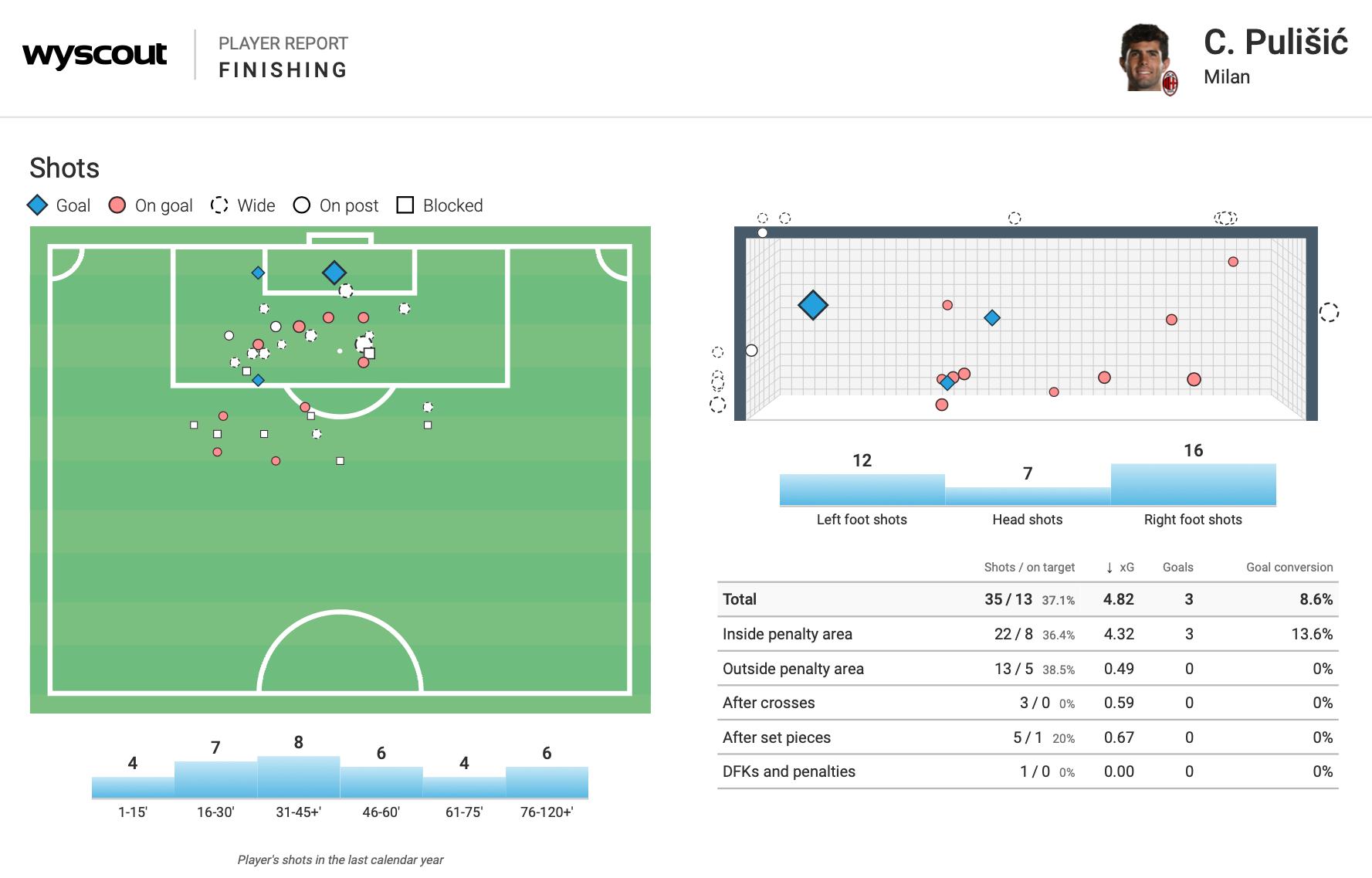
It’s easy to see that this is Pulisic’s current biggest limit and the reason why he never really thrived with the Chelsea shirt. Even in his best seasons, the ones in which he played the most, Pulisic always had few shots to goal. Looking at the numbers from two seasons ago, when he played better and more regularly, he showed quite an offensive underperformance. As of now, Pulisic’s biggest limit is finishing. Some technical problems and a lack of efficiency add up to seesawing decision-making in the offensive third, which also influences how he links with his teammates.
So, to sum up, Pulisic is a very quick and technical player in 1v1s, superb at creating numerical superiority and linking with his teammates, even in narrow spaces. But when he has to make the last play, in shooting or passing, he often loses his effectiveness. We will see if Serie A – which will offer him even less space but more time to think – will be the ideal context for him to work on those flaws that still stop him from being an elite player.
